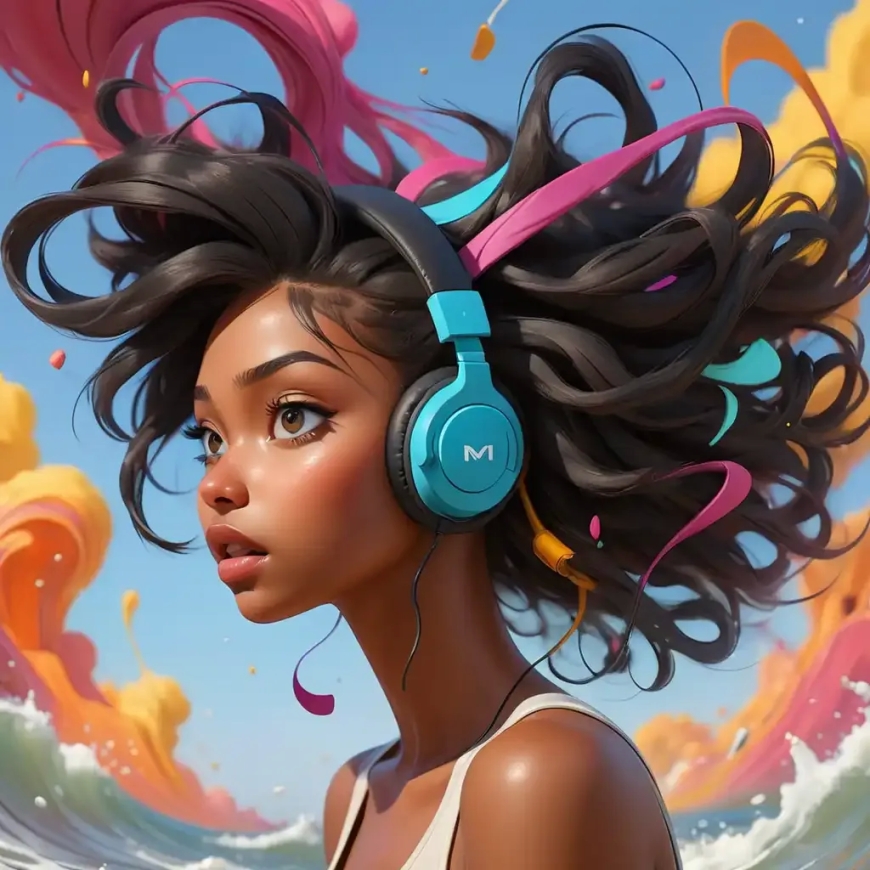Beginner’s Guide to AI Image Generators
AI image generators are tools powered by artificial intelligence that create images based on text prompts or sample images. They use advanced machine learning models, like GANs (Generative Adversarial Networks) or diffusion models, to produce realistic or artistic visuals.

The production of images is one of the intriguing uses of artificial intelligence (AI), which has transformed many facets of our lives. AI technologies for making images have grown in popularity because they make it simple for consumers to produce beautiful images.
This book will teach you everything you need to know about AI picture creation tools, regardless of whether you're a professional designer, a hobbyist, or someone who is interested in the possibilities of AI.
What Are AI Tools for Creating Images?
AI tools for making photos use machine learning algorithms to produce images in response to user input. These tools can alter already-existing photos, turn written explanations into visuals, or even start from scratch with completely original designs.
These technologies are usually powered by generative adversarial networks (GANs), deep learning, and neural networks.
Important Characteristics of AI Tools for Image Creation
Text-to-Image Generation: Generate detailed images from text descriptions.
Style Transfer: Incorporate creative styles into images.
Enhance photographs by raising their resolution and quality.
Object Addition and Removal: Easily add or remove things from photographs.
Customization Options: Adapt pictures to particular needs and tastes.
Common AI Tools for Creating Images
A number of AI image generator programs have become well-known because to their remarkable features and ease of use.
The following are a few of the most noteworthy:
1. DALL-E 2
DALL-E 2, a sophisticated AI model developed by OpenAI, generates images from written descriptions. It is a favorite among designers and artists because of its reputation for producing incredibly imaginative and complex images.
Key Elements
superior image creation from text.
the capacity to produce innovative and fantastical images.
user-friendly UI for novices.
2. The DeepArt
Neural networks are used by DeepArt to turn images into pieces of art that are influenced by the styles of well-known painters. It's ideal for anyone who want to give their pictures a unique flair.
Key Elements
To impart artistic effects, use style transfer.
support for different forms of art.
interface that is easy to use.
3. ML Runway
A variety of AI solutions for creatives, such as image creation and video editing, are available from Runway ML. It is made to be user-friendly for both novices and experts.
Key Elements
several AI tools for various media.
features for real-time collaboration.
connection to widely used design software.
4. Artbreeder
With Artbreeder, users may use collaborative AI to generate and develop images. It creates original images by fusing deep learning techniques with genetics-inspired techniques.
Important Features
Integrate and transform pictures.
lots of opportunities for personalization.
platform that is driven by the community.
Beginning to Use AI Tools for Image Creation
It may be both thrilling and daunting to begin using AI picture creation tools.
Here is a detailed tutorial to get you going:
Step 1: Select the Appropriate Instrument
Choose the tool that best meets your requirements. DALL-E 2 might be the greatest option if you want to create graphics from text. DeepArt is the best for style transfer. Examine various tools and their features to choose which one best suits your needs.
Step 2: Register and Configure
You must create an account in order to use the majority of AI picture creation tools. Create a profile and complete the registration process. Use the free trials or restricted free usage that certain products offer to learn more about their capabilities.
Step 3: Examine Resources and Tutorials
Examine the tool's resources and tutorials before getting started. These might assist you in comprehending how to make efficient use of the features. Numerous platforms provide community forums, user manuals, and video tutorials for assistance.
Step 4: Get to work creating
Start by exploring with easy assignments. Start with simple descriptions for text-to-image tools and work your way up to more intricate ones. To view the outcomes of style transfer, submit your images and apply several styles.
Step 5: Try Different Things and Personalize
Don't be scared to try new things. Experiment with various inputs, styles, and settings. Take the time to experiment and produce something original using the many modification choices that AI picture creation software frequently offer.
Step 6: Store Your Work and Distribute It
Save your work as soon as you're happy with it. You can download the photographs in a variety of formats using the majority of programs. To promote your work and receive feedback, share your projects with friends, on social media, or in online groups.
Advice for Making the Most of AI Tools for Creating Images
Start Simple: Before beginning more complicated projects, start with simpler ones to gain a sense of the tool.
Use High-Quality Inputs: Clear text descriptions and excellent photos will yield the greatest results.
Try Various Settings: Vary the settings to observe how they impact the result. New effects and styles may be discovered as a result.
Join Communities: Participate in online forums and communities to share your work, receive feedback, and learn from other people.
Keep Up: AI technology is always changing. To get the most out of your tool, keep an eye out for updates and new features.
AI Image Generator Tools' Future
AI techniques for producing images are developing quickly, and the future appears bright.
Keep an eye out for the following trends:
Increased Realism
Even more realistic images will probably be produced by future AI models, making it harder to tell the difference between actual and artificially made images. This will create new opportunities in industries like entertainment, advertising, and the arts.
Enhanced Availability
We may anticipate more approachable tools made for non-experts as AI technology becomes more widely available. Because of this, anyone without a lot of technical expertise will be able to produce beautiful pictures, democratizing the creative process.
Combining Other Technologies
Tools for AI picture creation will increasingly combine with other technologies, such virtual reality (VR) and augmented reality (AR). Users will be able to produce interactive graphics and immersive experiences as a result.
Moral Aspects to Take into Account
Ethical issues will become increasingly important as AI-generated images proliferate. It will be necessary to address concerns like copyright, false information, and the possible abuse of content produced by AI.
In Conclusion
AI tools for making images are revolutionizing how we produce and engage with images. These tools provide countless opportunities for creativity, from applying creative styles to creating visuals from text.
You may use AI to produce beautiful pictures by selecting the appropriate tool, experimenting with features, and remaining active in the community. AI picture production has a bright future, and today is the ideal moment to learn more about this fascinating subject.
What's Your Reaction?
 Like
0
Like
0
 Dislike
0
Dislike
0
 Love
0
Love
0
 Funny
0
Funny
0
 Angry
0
Angry
0
 Sad
0
Sad
0
 Wow
0
Wow
0






































